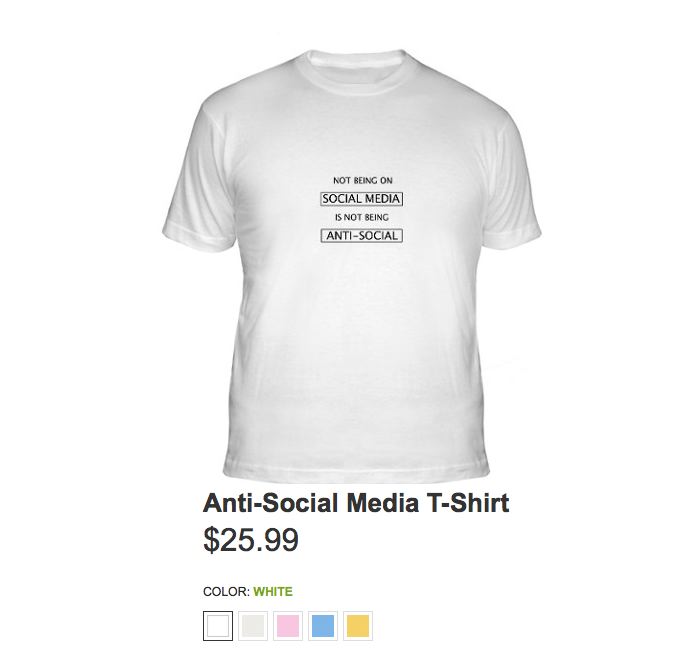|
cyberbarf VOLUME 16 NO. 7 EXAMINE THE NET WAY OF LIFE FEBRUARY, 2017 ©2017 Ski Words, Cartoons & Illustrations All Rights Reserved Worldwide Distributed by pindermedia.com, inc.
NEW EPISODE:
|
|
|
|
When the calendar turns over to February, many things come to mind. First, it is the climax of Winter. Cold temperatures, gray sunless days, and the wish for warmer weather. Second, the primary and clear reflection on those New Year's Eve resolutions that may have been clouded in a champagne haze. But what many young people think about is the dreaded middle day as it reflects the pressure of one's culture, society and familial pressures of your “ relationship status.” February 14 is a big red calendar target. It is either a good day or a lonely day. And it appears that the latter is increasing eventhough the means of instant communication is getting better. It is another new paradox. More people are single without a significant other. Single households are becoming the majority norm. It is significant enough that governments are worried about negative population growth while industrious inventors and manufacturers are rushing to serve the new single consumer market. |
|
|
cyberbarf THE ONE AND ONLY CULTURE The Single Life is like a rollercoaster. It has ups, downs, twists, turns, laughter and screams. But with most amusement park rides, the experience is best lived with someone else. Science will state that the basic human drive is reproduction. When our distant ancestors began to domesticate plants and animals, a society of nomads turned into community civilizations with new rules of order. Pair bonding was key to the successful re-generation of the species. But as the need for community support for survival waned to today's advanced technological sourcing of distant food sources and ease of exchange of goods and services, people are learning that one can survive adequately by one's self. But there are still primal urges to create family units. The natural order insists on it. But even today, more couples are deciding against having children, the primary purpose of marriage. When couples part, by divorce or death, there is another level of single people in society with different aspects to their situation. However, basic instincts are being tempered by post-industrial cultures, higher education and neo-modern economics. The largest growing population segment is the single household. Solos are no longer outcasts in society. In fact, business is trying to cater to the lonely. Even though there is less a stigma attached to being single, does not mean that all singles are happy. Kyoto News Agency reported that travel agencies have started organizing bridal ceremonies for single women. Kyodo news agency Solo wedding packages includes choosing your own special gown, bouquet and hairstyle, a limousine service, a stay at a hotel and a commemorative photo album. “This package boosted my sense of self-esteemÉ the effect was equal to a more extraordinary experience, such as visiting a World Heritage castle,” says Tomoe Sawano, one of the first to try out a solo wedding. Almost half of them were married women who either did not have a wedding ceremony or were not satisfied with that experience, according to Cerca Travel. The company's president, Yukiko Inoue, said she created the package “to encourage women to have positive feelings about themselves, ”but admits that some people have said it would be “lonely, miserable and sad” to use it. More Japanese are living alone for a number of reasons - - -among them aging, urbanization, later marriage age and rising divorce rates The Japan Times reported in a recent article. It quotes the National Institute of Population and Social Security Research as saying that the country's population is expected to decline between 26 and 38 percent by 2060. The largest increase in singles is college educated women. In many countries, this is a new trend. Women with education can get better paying jobs, which lessens the cultural pressure to marry for economic stability. But the solo lifestyle does not include just single men or women. A newer trend is called “roommate marriages.” Many married couples find themselves in a loveless marriage, but cannot afford to break up for economic reasons or for the sake of their families or children. In essence, they live single lives under the same roof. Reality television shows in South Korea and China take celebrity singles into pretend marriages to film how they react to various common daily routines. It is not a reality dating show because the couples do not have the intent to have a long term relationship. It is a form of entertainment for viewers to get the experience of married life without the stress of a real life. Often, cultures cling to the concept of their celebrities as pure and innocent so their own personal lives are kept secret since their agencies believe being single helps retain their fans' interest. All cultures support traditional marriages. But when couples lose their affection for each other, there is a mourning is over lost love that is filled with hurt, sadness and anger. Married couples are living together as roommates: they work, take care of the kids and even have something of a social life. To family, friends and outside observers everything seems fine. But inside things are tense, business like and unromantic. Researchers estimate that almost 20 percent of married couples are in sexless relationships. This may be just the tip of the iceberg. For these roommate couples once strong passion and emotional closeness has gradually morphed into silent routines and polite indifference. Roommates are doing all the work of being married while getting few of the benefits. They do not feel loved, honored and cherished. And without a cushion of sexual and emotional closeness their relationship feels hard and brittle. Everyday stresses are harder to bare, parenting becomes more difficult and staying faithful looms as a bigger and bigger challenge. Increasingly partners ask themselves ”Is this all there is?” A relationship website concludes that there are two main reasons: first is benign neglect, Some partners spend so much time and energy on everything else in their lives that their relationship, the quality of their togetherness, falls to the bottom of their to do list. Without realizing it they take one another and their marriage for granted. Kids, work, needy parents, money pressures, ex- spouses, career challenges all demand time and energy. Partners put themselves last thinking their love will carry them through. And it does until it is buried under so much collateral damage it begins to fade into a distant memory. The second, more prevalent reason, has to do with the mismanagement of anger. Anger is inevitable in a marriage. But problems develop when angry feelings are allowed to pile up. Accumulated anger kills love and passion. Most roommate partners are separated by a wall of anger that is become so high they can no longer reach over it and touch one another. The average age at first marriage in Japan has climbed steadily from the middle of the 20th century to around 31 for men and 29 for women in 2013, among the highest in Asia. Women postpone marriage for a variety of reasons, including high personal and financial expectations, increasing independence afforded by education and employment, and the difficulty of balancing work and family. In most westernized cultures, this is also true. There also may be unrealistic expectations coupled with bad experience that are pulling back individuals from finding their soul mates. The concept of finding the perfect mate is like a complex math problem. After time, trial and error, many people attempt to settle for companionship over their dreams. In some, that creates an emotional regret landmine that could go off at any time. One of the most basic human instincts is not letting one's self get hurt. Relationships are fraught with potential pain. The easy path is not to start the journey. Men who do not aggressively pursue marriage are known as herbivore men. The economic fallout of the financial crisis of 2008 may have lingering effects. Unmarried singles have returned home to their parents after college. Most have not found a career path or suffer from large student loan debt or chronic underemployment. Sociologists call them parasite singles for unmarried adults in their late 20s and 30s who live with their parents. While this may be new in the United States, it has been found earlier in England and Japan in the 1990s. In Japan, a NEET is a young person who is “Not in Education, Employment, or Training.” The acronym NEET was first used in the United Kingdom but its use has spread to other countries and regions including Japan, South Korea, Taiwan and the United States. In the United Kingdom, the classification comprises people aged between 16 and 24 (some 16 and 17 year-olds are still of compulsory school age); the subgroup of NEETs aged 16-18 is frequently of particular focus. In Japan, the classification comprises people aged between 15 and 34 who are not employed, not engaged in housework, not enrolled in school or work-related training, and not seeking work. NEET is a distinct social policy category from that of freeter, the classification for those working low-wage part-time jobs, although in practice thousands of young people move between these categories (from the status of non-employed young person to that of a part-time worker and back) each year. The demographic prevalence of NEETs has been indicated in employment statistics. Japanese politicians expressed concern about the impact on the economy of the growth in the NEET population. The estimated size rose from 480,000 in September 2002 to 520,000 in September 2003, according to the Japanese Ministry of Health, Labor and Welfare. Other surveys by the Japanese government in 2002 presented a much larger figure of 850,000 people who can be classified as NEET, of which 60 percent were people aged 25 to 34. When the NEET issue erupted in the Japanese media in 2004 and 2005, non-employed young people falling into this category were framed as lazy, work-shy and voluntarily out of employment. This media portrayal was effective in arousing the concern of Japan's conservative, middle aged population, but it led only to moderate support for new youth policies. Unlike most Western European countries, Japan's unemployment benefit terminates automatically after three to six months and there is a limited range of support for those with special needs. Many NEETs in Japan are thus inevitably supported by their parents or relatives, though some find their way to Youth Support Stations and other services designed or enacted by social enterprises A real concern is that some NEETs have the mindset of rejecting their adulthood. The accepted social model is to be educated, find full-time work, get married, raise children and take care of your family. When other third world economies (China, Japan, India, Vietnam, etc.) took major manufacturing from Europe and U.S. global firms, Japan's traditional salaryman economy (a lifetime job at one employer) began to vanish. Many youth did not want to have the ulcer-stress, long hours, hard work of their parents salary lives. So they have rejected the notion of being enslaved to one job or one employer. But the lack of capital and determination to risk creating their own job paths, many NEETs have become social and economic hermits. Professor Michiko Miyamoto describes the situation as a “breakdown of the social framework forged in an industrial society, by which young people become adults.” In Japan, Hikikomori literally “pulling inward, being confined, as in acute social withdrawal, are reclusive adolescents or adults who withdraw from social life, often seeking extreme degrees of isolation and confinement. Hikikomori refers to both the phenomenon in general and the recluses themselves. The Japanese Ministry of Health, Labor, and Welfare defines hikikomori as people who refuse to leave their house and thus isolate themselves from society in their homes for a period exceeding six months. Psychiatrist Tamaki SaitØ defines hikikomori as a state that has become a problem by the late twenties, that involves cooping oneself up in one's own home and not participating in society for six months or longer, but that does not seem to have another psychological problem as its principal source. While the degree of the phenomenon varies on an individual basis, in the most extreme cases, some people remain in isolation for years or even decades. Often hikikomori start out as school refusals, feel the pressures of the outside world, hikikomori react by complete social withdrawal. They usually have few or no friends. While hikikomori favor indoor activities, some venture outdoors occasionally.] The withdrawal from society usually starts gradually. Affected people may appear unhappy, lose their friends, become insecure, shy, and talk less. According to government figures released in 2010, there are 700,000 individuals living as hikikomori with an average age of 31. There is a fear of “the 2030 Problem,” when they are in their 60s and their parents begin to die. This problem increases the pressure on the Japanese government to correct its current negative population growth. Japan needs their people to marry and have babies so the next generation can support the growing elder class who have social welfare costs. There is power in numbers. While singles continue to become a dominate segment of society, they will increase their buying power to change mainstream views of their chosen lifestyle. There is more than one trillion dollars in US student debt. Real unemployment is more than 9 percent. One report stated that more than 50 percent of college graduates have full time positions in their chosen field. Youth underemployment will affect their parents savings and retirement plans. It will change the social-economic impact on commerce. Single culture will continue to grow world wide, whether it be in businesses catering to solo needs, television shows building up the non-lonely aspects of single living, and economic realities of bad relationships.
iToons
cyberbarf SOLO LIVING MARKETING Early adopters have begun to cater to the single lifestyle. Singles' Day or Guanggun Jie (Chinese for “bare sticks holiday”) is an entertaining festival widespread among young Chinese people, to celebrate the fact that they are proud of being single. The date, November 11th (11/11), is chosen because the number 1 resembles an individual that is alone. This festival has become the largest online shopping day in the world, with sales in Alibaba's sites Tmall and Taobao at more than $17.8 billion US in 2016. Singles' Day or Bachelors' Day, which originated from Nanjing University in 1993, was initially celebrated at various universities in Nanjing during the 1990s. It got the name because the date consists of four ones. Upon graduating, these college students carried the university tradition into society. Singles' Day has been largely popularized in the internet era and is now observed by youth in several regions outside China as well. Singles' Day serves as an occasion for single people to party with single friends. The holiday was initially only celebrated by young men, hence the name, “Bachelors' Day”, but is now widely celebrated by both sexes. Blind date parties are also popular during this day in an attempt to bid goodbye to their single lives. Some schools of a university put forward a special program to gather singles together for celebration. Singles may take on a bemoaning or self-deprecating attitude for remaining single as a university student, but this has helped curb that negativity. Shopping promotions were highlighted throughout China and activities were widespread. Although this date is meant to celebrate singlehood, the desire to find a spouse or mate is often expressed by young Chinese on this date, while other love-related issues are discussed by the Chinese media. Single university culture was brought to the whole society, and because of the large amount of single people and social media's strong power, this day has become more and more popular in the Chinese society. As more people join in the celebration of this holiday, it has become a great opportunity for companies targeting younger consumers, including restaurants, Karaoke, and online shopping malls. Euromonitor International national statistic analysis shows the foundation for the growth of this trend. The rise in single person households worldwide is creating great business opportunities for a range of sectors, including providers of online communications, manufacturers of domestic electrical appliances and consumer electronics, the construction industry, and the entertainment industry. The number of one-person households worldwide reached 202.6 million in 2006, up from 153.5 million in 1996. The trend of single households is closely correlated to culture and living standards. As such, developing regions tend to have a considerably lower proportion of single households than developed regions. Most single householders fall into one of the three categories: single young professionals who can afford their own place, middle-aged divorcees, and elderly people who tend to be on a tight budget. The trend towards single households has contributed to fueling a global housing boom. A range of industries, including the construction industry, real estate agents and financial services, can expect to grow as a result. In the future, single households will be the most important consumer group not only because of their rapidly rising number but also because they are leading the way in changing consumer lifestyles. One-person households account for 11.8 percent of total households. The trend of single person households is closely correlated to culture and living standards. The proportion of single households is highest in developed countries. In 2006, one person households accounted for 28.9 percent of all households in Western Europe, 26.7 percent in North America and 25.7 percent in Australasia. In Eastern European countries, the socialist legacy with abundant housing and the modern trend of young professionals delaying marriage has also contributed to the relatively high proportion of one-person households. In 2006, 22.0 percent of all households in Eastern Europe were single households. The proportion of single households in Asia Pacific was 7.6 percent and 7.8 percent in Latin America and the Caribbean, which may reflect strong cultural ties toward extended families. A Newsweek article from February, 2014 expressed a new demographic, the Single Indies: Women over 35, unmarried, with no children and, most important from an advertising point of view, successful. Single Indies, approximately 28 million women, spend around $1 trillion each year. The Single Indie is not a niche market. The Single Indie is almost a third of all adult women. And they have disposable income for traveling, buying things for her home, driving a nice car and being able to afford personal luxury items. The classic nuclear family, which according to the US Census Bureau, represents only 22 percent of households today, as opposed to 44 percent in the 1960s. " In 2013, NBCUniversal's Integrated Media group found that Single Indies were not just successful (accounting for 59 percent of master degree holders), they spent $22 billion on vehicles (five times more than independent men), $20 billion on entertainment, and $50 billion on food. Perhaps the biggest cause of change is social media and the Single Indie's mastery of it. According to comScore, women are the majority of users of social networking sites and spend 30 percent more time on these sites than men. And women are more engaged online both as info seekers and as advocates. Brands are aware that single women have a mechanism to share their thoughts and broadcast to everyone in their social tribe their preferences and their complaints. , In many markets, living solo has become the norm rather than the exception. With more millennials delaying marriage and other adulthood checkpoints, marketers are forcibly rethinking their strategies, adjusting product sizes, accommodations, and food, just to start. For example, individual squeeze packets for peanut butter. Prepared single serving dinners at grocery stores. To understand this shift in marketing, one need only look at singles themselves. Whether they are focused on work or enjoying disposable income, long term singles are not pining for a ring and a white picket fence. They are prone to view marriage as the end to their freedom, and feel reluctant about taking the plunge. Many millennials grew up as children of divorce. On the older end of the spectrum, boomers continue to get divorced, choosing to co-habitate with someone new or live apart as a couple, or just quit the whole dating game entirely. And as women of all ages continue making gains in education and work, the pressure to settle down has become little more than a distant refrain. Thanks to these factors today's singles are more active, selfish, and wealthy -- especially in growing markets like China, India, and Brazil And marketers are keen to respond to their specific needs. In pricey cities such as New York, micro-apartments are slated to offer cheaper options for singles.. Cities like London, Warsaw, Tokyo, and Shanghai are also experimenting with apartments ranging from 250 to 370 square feet. Ikea is now pushing the PS collection, aimed at 20 -somethings on the move and in need of furnishings for smaller spaces. And in Korea, the e-commerce site AKMall features a single life corner for singles in need of self-help books and multipurpose furniture. Outside the single home is also getting a makeover. More bars and restaurants are creating single spaces where individuals can sit alone for meals or drinks. Promotions for single travel trips are also on the rise with single-only resorts, cruises and activities. An All Inclusive Singles Vacation means you will get the most from your singles travel dollar, pay one price and then not have to worry about a thing while on holiday. Companies promote the ease of meeting, mingling and playing at the beach with other fun singles while your singles hostess takes care of all the details. Packages include hotel accommodations , all meals and snacks at a variety of buffets and a la cart restaurants beverages, including alcoholic drinks as well as daily hotel and singles activities. It is a advertised celebration turnkey vacation for solo travelers. Single serving food sizes. Single vacation packages. Single apartments. Single lifestyle publications. Single social media tribes. People who live independent, non-dependent lives may seem to be an ideal for people burdened by stagnated wages, large families, or college debt burdens. But the world will continue to focus on those groups, especially single women without children, who have disposable income. |
 |
FREELANCE CARTOONS, ILLUSTRATIONS FOR NEWSPAPERS, MAGAZINE, ON-LINE DO YOU CONTENT? CHECK OUT
|
 |
|
cyberbarf THE WHETHER REPORT |
cyberbarf STATUS |
| Question: Whether the US Supreme Court decision in the Slants trademark case will change the government's role in deciding what offensive speech cannot protected under the law? |
* Educated Guess * Possible * Probable * Beyond a Reasonable Doubt * Doubtful * Vapor Dream |
| Question: Whether President Trump's new leaders at the EPA will drastically change the US position on climate change? |
* Educated Guess * Possible * Probable * Beyond a Reasonable Doubt * Doubtful * Vapor Dream |
| Question: Whether Amazon's close to the vest viewership numbers on its original content shows hamper full monetization of its shows? |
* Educated Guess * Possible * Probable * Beyond a Reasonable Doubt * Doubtful * Vapor Dream |
|
LADIES' JAMS MULTIPLE STYLES-COLORS $31.99 PRICES TO SUBJECT TO CHANGE PLEASE REVIEW E-STORE SITE FOR CURRENT SALES
|
PRICES SUBJECT TO CHANGE; PLEASE CHECK STORE THANK YOU FOR YOUR SUPPORT!
NEW REAL NEWS KOMIX! SHOW HACK! |
|
PRICES TO SUBJECT TO CHANGE PLEASE REVIEW E-STORE SITE FOR CURRENT SALES & CURRENT STYLES
|
|
THE PINDERMEDIA STORE IS FULL OF FUN T-SHIRTS CLOTHES, HATS AND OTHER ITEMS. CHECK OUT THE STORE FOR ITEMS
SUPPORT cyberbarf VISIT THE CYBERBARF STORE! Prices and styles may vary depending on sales, allotments, inventory. |
|
BACK IN BLACK WITH THIS CLASSIC CYBERBARF T-SHIRT!
FEATURING: THE REAL NEWS IMPACT EDITORIAL CARTOONS WRIGLEYVILLE WAR POLITICS ENDORPHIN RUSH THE DARK ABYSS RANDOM ELECTRONS SPECIALS
PORTFOLIOS OF SKI EDITORIAL CARTOONS ILLUSTRATIONS PHOTOGRAPHY |
NEW THEORIES AND CHARACTER ESSAYS INCLUDING 10 YEAR ANNIVERSARY ARTICLES
cyberbarf
THE STEAM PUNK SPECIAL EDITION featured new Music from Chicago Ski & the (audio) Real News: (mp3/4:14 length)
EXAMINING THE NET WAY OF LIFE cyberbarf™ distributed by pindermedia.com, inc.
|
cyberbarf
Distribution ©2001-2017 pindermedia.com, inc.
All Ski graphics, designs, cartoons and images copyrighted.
All Rights Reserved Worldwide.
















